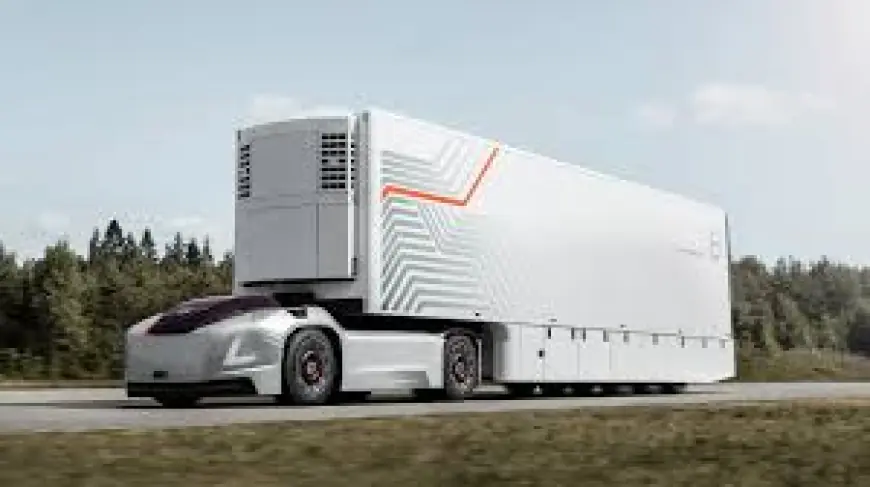Opportunities in Asia-Pacific Semi & Fully Autonomous Vehicle Market 2030F
Governments across the Asia-Pacific region are actively supporting the development and deployment of autonomous vehicles through regulatory frameworks and policy initiatives.

The Asia-Pacific Semi & Fully Autonomous Vehicle Market was valued at USD 14.86 billion in 2023 and is projected to reach USD 27.59 billion by 2029, growing at a CAGR of 10.87% during the forecast period. The market is experiencing rapid growth fueled by advances in artificial intelligence (AI), machine learning, sensor technologies, and government-led initiatives promoting intelligent transportation systems. Growing demand for safer, efficient, and connected driving experiences has further reinforced the adoption of semi and fully autonomous vehicles in the region.
Market Overview
The Asia-Pacific (APAC) region is witnessing a paradigm shift in its automotive landscape, driven by the transition from traditional vehicles to smart, connected, and autonomous systems. A mix of strong governmental support, cutting-edge technology integration, and rising consumer interest is accelerating adoption. Automakers, in collaboration with technology firms, are investing heavily in research and development (R&D) to ensure that semi and fully autonomous vehicles meet the demands of safety, efficiency, and urban mobility challenges.
However, challenges such as high initial costs, cybersecurity risks, and regulatory complexities remain barriers to mass-scale deployment. At the same time, the market presents transformative opportunities across urban mobility, logistics, and shared transportation.
Download Free Sample Report: https://www.techsciresearch.com/sample-report.aspx?cid=3586
Emerging Trends in the Market
1. Integration of AI and Machine Learning
AI and machine learning have become the backbone of autonomous driving. From object recognition to decision-making in real time, these technologies enhance situational awareness and minimize human error. In the APAC region, investments are surging in AI-powered driving systems, particularly in China, Japan, and South Korea.
2. Adoption of Advanced LiDAR and Sensor Technologies
LiDAR, radar, ultrasonic sensors, and camera-based vision systems are advancing in precision, cost efficiency, and scalability. These innovations enhance the ability of vehicles to detect obstacles, interpret traffic conditions, and ensure safer navigation even in complex urban environments.
3. 5G and Vehicle-to-Everything (V2X) Connectivity
With APAC leading the global rollout of 5G infrastructure, autonomous vehicles benefit from ultra-low latency communication. V2X enables seamless interaction between vehicles, pedestrians, and infrastructure, ensuring smoother traffic flow and reducing accident risks.
4. Autonomous Taxi and Delivery Trials
Countries such as Japan, Singapore, and China have piloted autonomous taxi and delivery services. These trials demonstrate real-world feasibility and showcase how autonomous systems can reduce costs and improve convenience in both passenger and logistics sectors.
5. Rise of Shared Mobility and Robotaxis
The rise of urbanization and shared economy models has given momentum to robotaxis and shared autonomous vehicles. These solutions not only reduce congestion but also complement sustainability goals by reducing private car dependency.
6. Synergy with Electric Vehicle Growth
Autonomous technology is increasingly aligned with electric mobility. The integration of electric autonomous vehicles highlights a dual shift toward sustainability and automation, making them central to future smart city ecosystems.
Market Drivers
1. Government Incentives and Regulations
Governments across APAC are proactively supporting autonomous vehicle development. Policies include subsidies for R&D, tax benefits, and pilot programs that encourage testing. Japan and South Korea, in particular, have established regulatory sandboxes for autonomous vehicle trials.
2. Rising Demand for Safer and Efficient Transportation
Growing concerns over road safety and traffic congestion are pushing consumers and authorities to adopt semi and fully autonomous systems. Features such as advanced driver-assistance systems (ADAS) serve as immediate solutions while paving the way toward full autonomy.
3. Technological Innovations in Sensors and Connectivity
The convergence of LiDAR, radar, and 5G technologies is enabling smarter and more reliable autonomous systems. These innovations reduce dependency on human intervention and improve navigation accuracy.
4. Investment from Automakers and Tech Giants
Automotive leaders and technology firms are engaging in strategic alliances to co-develop autonomous solutions. Collaborations between global giants and local players are resulting in rapid scaling of new vehicle models tailored for APAC markets.
5. Urbanization and Smart City Initiatives
Asia-Pacific is home to some of the fastest-growing urban centers in the world. Governments are investing in intelligent transport systems, and autonomous vehicles are being positioned as vital components in smart city frameworks.
Industry Key Highlights
- The passenger car segment dominates the market due to widespread consumer adoption and integration of advanced features that enhance safety and driving comfort.
- Japan emerges as the fastest-growing country in APAC for semi and fully autonomous vehicles, backed by government support, a strong automotive ecosystem, and smart mobility initiatives.
- Autonomous taxis and logistics vehicles are gaining traction, particularly in China and Singapore, as governments push for greener, more efficient mobility solutions.
- Collaboration between automotive manufacturers and technology firms is accelerating the development of reliable autonomous software platforms.
- While costs and public skepticism remain hurdles, growing consumer awareness of safety and efficiency benefits is reshaping perceptions.
Competitive Analysis
The APAC semi and fully autonomous vehicle market is characterized by intense competition, with global giants and regional players investing heavily in R&D. Strategic partnerships, acquisitions, and collaborations define the competitive dynamics.
Major Players in the Market
- Hyundai Motor Company – Strong presence in South Korea, with ambitious goals in EV and autonomous mobility.
- Daimler Truck AG – Investing in self-driving trucks, targeting logistics and commercial vehicle applications.
- SAIC Motor Corporation Limited – A Chinese leader pushing for large-scale adoption of autonomous passenger cars.
- Toyota Motor Corporation – Pioneering autonomous technology, leveraging its robust R&D and manufacturing capacity.
- Nissan Motor Corporation – Expanding trials of ADAS and Level 3 autonomy across APAC markets.
- AB Volvo – Focusing on heavy commercial vehicles with advanced automation.
- General Motors Company – Leveraging Cruise division to expand into Asian urban mobility services.
- Volkswagen AG – Partnering with tech companies to introduce autonomous EVs.
- Tesla Inc. – Pushing self-driving innovation, with growing influence in APAC’s premium passenger car segment.
- BMW AG – Integrating AI and digital ecosystems into its semi-autonomous and fully autonomous platforms.
The market is expected to see further cross-industry collaboration as technology companies play an increasingly central role in vehicle automation.
Future Outlook
The future of the APAC semi and fully autonomous vehicle market looks promising, with sustained double-digit growth expected through 2029. Increasing investments in AI, stronger regulatory frameworks, and expansion of 5G networks will create a favorable ecosystem for adoption.
Passenger cars will continue to dominate, but autonomous commercial vehicles, particularly in logistics and urban freight, will gain momentum. Japan and South Korea are likely to set benchmarks in technology integration, while China will lead in terms of sheer adoption scale.
By 2029, semi-autonomous technologies (L2–L3) will be mainstream across most new passenger vehicles, while fully autonomous systems (L4–L5) will see gradual deployment in shared mobility and logistics.
10 Benefits of the Research Report
- Provides detailed market size, forecasts, and CAGR insights up to 2029.
- Analyzes emerging trends shaping the future of autonomous driving in APAC.
- Identifies key growth drivers and restraints impacting adoption.
- Offers in-depth segmentation analysis by automation level, component, vehicle type, and country.
- Maps the competitive landscape with profiles of leading players.
- Examines government policies and incentives driving adoption.
- Highlights technological innovations in sensors, AI, and connectivity.
- Evaluates consumer demand patterns across passenger and commercial vehicles.
- Assesses opportunities in shared mobility and smart cities.
- Helps stakeholders make data-driven investment and strategy decisions.
Conclusion
The Asia-Pacific Semi & Fully Autonomous Vehicle Market is at the forefront of global innovation in mobility. With its unique blend of government support, technological advancements, and consumer demand, the region is poised to transform urban mobility and logistics over the next decade.
Despite challenges related to cost, cybersecurity, and public perception, the opportunities far outweigh the risks. As AI, 5G, and sensor technologies mature, APAC will not only adopt autonomous vehicles at scale but also set global benchmarks for sustainable, safe, and connected transportation.
Contact Us-
Mr. Ken Mathews
708 Third Avenue,
Manhattan, NY,
New York – 10017
Tel: +1-646-360-1656
Email: [email protected]
Website: www.techsciresearch.com
What's Your Reaction?
 Like
0
Like
0
 Dislike
0
Dislike
0
 Love
0
Love
0
 Funny
0
Funny
0
 Angry
0
Angry
0
 Sad
0
Sad
0
 Wow
0
Wow
0


















































